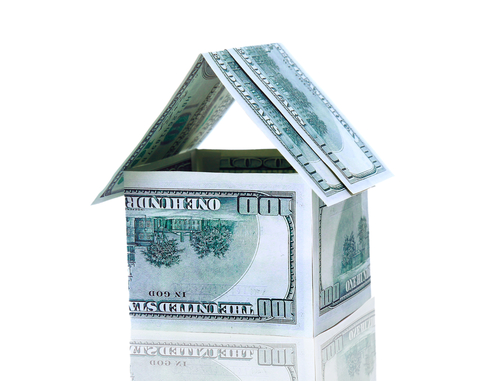The effects of the subprime and mortgage crisis in the United States continue to be felt today, several years after the crisis first began. The mortgage crisis was caused, in large part, by a number of different bad lending behaviors on the part of mortgage banks and lenders. These included making loans without verifying people’s income (no doc loans or “liars” loans) and giving people adjustable rate mortgages that would adjust upward within a few years to far more than people would be able to afford to pay. One other practice that contributed to the crisis, however, was allowing homeowners to actually borrow more than the value of their homes.
110+ Percent Loans
Traditionally, you are supposed to put 20 percent down on a home when you take out a mortgage. This 20 percent down payment protects the bank in the event that they have to foreclose by ensuring that they are able to recover all of the money that they lent to you. It also helps to protect the borrower. If property values do fall, the 20 percent down payment gives the borrower a cushion so he or she can still sell the house without having to bring cash to the table. Without this 20 percent cushion, a serious drop in property values could make it impossible to sell unless you had the money to pay tens, or even hundreds of thousands, of dollars out of pocket at the time of the sale.
When banks began to lend people 100 percent (or more) of the value of their homes, this down payment protection went away and people became extremely vulnerable to any downturn in the market. Unfortunately, many of those people were not able to refinance their adjustable rate mortgages or sell their homes as a result- helping to contribute to the tide of foreclosures.
The Rules Today
Although reform has come to the mortgage market and there are now far more stringent limitations on who can get a mortgage, the fact remains that it is still possible today to get a mortgage for up to 100 percent (or more) of the value of your house. The difference is that most of these loans now come from smaller local banks or credit unions, rather than from the national banks who have gotten into so much trouble over the mortgage loan mess. The loans also usually come in the form of a home equity line of credit (HELOC) where you can borrow as you need it, rather than taking all the money out up front as when you get a lump sum second mortgage.
To qualify for borrowing the full value of your home, you will now also need to actually prove your income and have a good credit score, as the lending standards are tighter. In some instances, having multiple appraisals to confirm the actual value of the property may be required as well. If you meet these burdens and have good credit, however, you can and will be able to borrow the full amount your home is worth in a home equity line of credit.
Of course, just because you can do something does not mean you should. Staying away from these 100 percent loans is one of the best things you can do to make sure you don’t end up yet another foreclosure statistic in a turbulent real estate market.
The effects of the subprime and mortgage crisis in the United States continue to be felt today, several years after the crisis first began. The mortgage crisis was caused, in large part, by a number of different bad lending behaviors on the part of mortgage banks and lenders. These included making loans without verifying people’s income (no doc loans or “liars” loans) and giving people adjustable rate mortgages that would adjust upward within a few years to far more than people would be able to afford to pay. One other practice that contributed to the crisis, however, was allowing homeowners to actually borrow more than the value of their homes.
110+ Percent Loans
Traditionally, you are supposed to put 20 percent down on a home when you take out a mortgage. This 20 percent down payment protects the bank in the event that they have to foreclose by ensuring that they are able to recover all of the money that they lent to you. It also helps to protect the borrower. If property values do fall, the 20 percent down payment gives the borrower a cushion so he or she can still sell the house without having to bring cash to the table. Without this 20 percent cushion, a serious drop in property values could make it impossible to sell unless you had the money to pay tens, or even hundreds of thousands, of dollars out of pocket at the time of the sale.
When banks began to lend people 100 percent (or more) of the value of their homes, this down payment protection went away and people became extremely vulnerable to any downturn in the market. Unfortunately, many of those people were not able to refinance their adjustable rate mortgages or sell their homes as a result- helping to contribute to the tide of foreclosures.
The Rules Today
Although reform has come to the mortgage market and there are now far more stringent limitations on who can get a mortgage, the fact remains that it is still possible today to get a mortgage for up to 100 percent (or more) of the value of your house. The difference is that most of these loans now come from smaller local banks or credit unions, rather than from the national banks who have gotten into so much trouble over the mortgage loan mess. The loans also usually come in the form of a home equity line of credit (HELOC) where you can borrow as you need it, rather than taking all the money out up front as when you get a lump sum second mortgage.
To qualify for borrowing the full value of your home, you will now also need to actually prove your income and have a good credit score, as the lending standards are tighter. In some instances, having multiple appraisals to confirm the actual value of the property may be required as well. If you meet these burdens and have good credit, however, you can and will be able to borrow the full amount your home is worth in a home equity line of credit.
Of course, just because you can do something does not mean you should. Staying away from these 100 percent loans is one of the best things you can do to make sure you don’t end up yet another foreclosure statistic in a turbulent real estate market.






